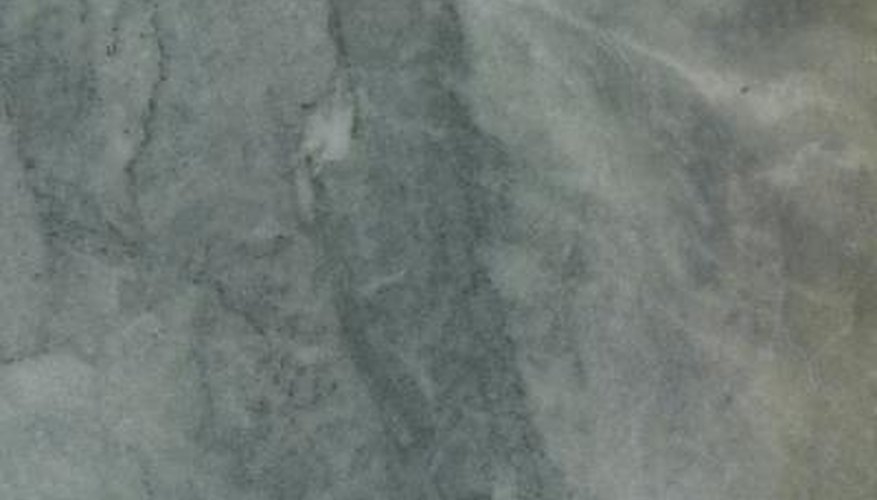Slate's natural beauty comes from multiple colours, textures and layers that subtly work as a whole to create an appearance that complements almost any decor. A slate faux finish is a natural choice for concrete surfaces, as the existing texture works well with a varied surface coat. Priming your concrete is the most important step toward a lasting faux finish, especially if you are working with concrete flooring in high-traffic areas. Use the best quality paints and supplies you can afford to ensure a finish that will last, and clean the concrete thoroughly before you begin.
Prime your surface with primer specifically designed for concrete. Apply the primer to the corners and edges of your surface with brushes, and then use a medium-nap roller, such as 3/4-inch, to coat the large areas. Allow the primer to dry completely.
- Slate's natural beauty comes from multiple colours, textures and layers that subtly work as a whole to create an appearance that complements almost any decor.
- Apply the primer to the corners and edges of your surface with brushes, and then use a medium-nap roller, such as 3/4-inch, to coat the large areas.
Coat the entire primed surface with grey or light brown paint. This colour will represent the grout or mortar between the slate pieces. As you roll on the colour, dip the end of a paintbrush into a colour slightly lighter than your mortar coat and fling drops of it at your surface, then immediately roll over them with the roller, blending them with the basecoat. Do the same with a colour slightly darker than your base colour, resulting in a three-color rough blend. Allow this layer to dry completely.
- Coat the entire primed surface with grey or light brown paint.
- As you roll on the colour, dip the end of a paintbrush into a colour slightly lighter than your mortar coat and fling drops of it at your surface, then immediately roll over them with the roller, blending them with the basecoat.
Tape out your mortar lines with masking tape. If you want your faux finish to look like even, square slate tiles, tape out a grid that stretches across the entire surface. If you want a pattern of various-sized slate tiles, lay out a 1-foot by 1-foot grid, and then remove random 1- to 2-foot strips of the tape between the grid crossings so you are left with a variety of 1- by 2-, 1- by 2- and 2- by 2-foot squares and rectangles. Do not press the tape down tightly; paint seeping under the edges will mimic slate's uneven edging.
Look at a piece of real slate and choose four colours of acrylic paint that closely match the shades within your real slate. These may be a light or dark brown, light or dark grey, dark green and maroon.
Mix your colour of acrylic paint that most closely matches the primary colour of your slate with a clear, acrylic, satin-finish paint. When mixed properly, you should be able to paint a stripe of it on newspaper and see the print through the glaze.
Wrap a terrycloth rag around a roller pad and secure it with rubber bands at various angles, making sure the rag bunches and hangs loose at various points, to give you a good texture.
Sprinkle your area with the three slate colours that aren't mixed with the satin medium.
Coat your rag roller with your glaze colour and roll it through the wet spatters to create a blended multicolour coat that mimics the appearance of slate. Allow this to dry, and then add a second coat with more glaze and less spattering.
- Look at a piece of real slate and choose four colours of acrylic paint that closely match the shades within your real slate.
- Coat your rag roller with your glaze colour and roll it through the wet spatters to create a blended multicolour coat that mimics the appearance of slate.
Remove the masking tape carefully once the area is dry.
Coat the entire surface with a clear satin acrylic finish. Floor wax also works well for a top coat. Apply three coats in high traffic areas.
TIP
Instead of priming, you can sandblast concrete or etch it with a muriatic acid solution to prepare it for paint. These methods require extensive cleanup, but may make your finish last longer.
WARNING
Muriatic acid is extremely dangerous to handle, so be sure to cover any skin that may be exposed to it, and wear a face mask.
